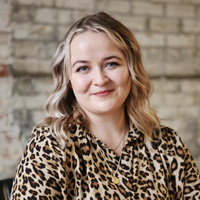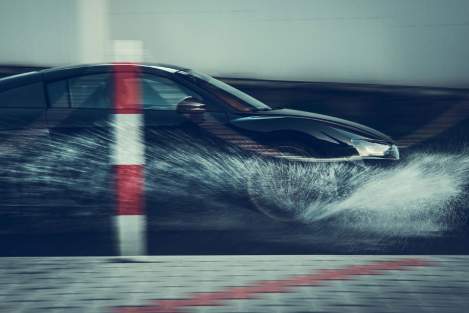
Written by Kayla Jane Barrie Updated on Dec 10, 2025 4 mins read

Hydroplaning is one of the most significant risks when driving in the rain. According to the National Highway Traffic Safety Administration (NHTSA), 70% of weather-related accidents happen on wet pavement.
Drivers need to understand how much the weather affects road safety. Every month, hundreds of traffic accidents occur due to adverse weather conditions. Hydroplaning is a common cause of traffic crashes today. This article will explain hydroplaning, how to prevent it, and how to recover from it.
One of the most common risks of driving in the rain is hydroplaning. Rain can be just as dangerous as driving in the fog or winter road conditions if your car begins to hydroplane.
Hydroplaning, also known as aquaplaning, is when the tires lose contact with the road surface and instead skid along the top of a puddle or standing water, which can cause the vehicle to lose control and skid out of control.
Hydroplaning is a phenomenon that occurs when roads are wet or flooded, usually during heavy rain or when there is standing water on the road surface. This occurs when the water under the tire cannot escape, causing pressure to build up and lift the tire off the ground. Some common factors contributing to hydroplaning include vehicle speed, tire pressure, tread depth, pavement texture, roadway, and environmental conditions.
When a vehicle hydroplanes, the driver may experience a lack of control, as the steering becomes less responsive, and the car may slide or drift. Driving at high speeds can be particularly hazardous, as it increases the likelihood of skidding or losing vehicle control.
To minimize the risk of hydroplaning, drivers must drive at safe speeds during wet conditions, maintain proper tire tread depth and inflation, and avoid sudden manoeuvres or harsh braking.
Recognizing hydroplaning while driving is crucial for responding appropriately and maintaining vehicle control. Here are some signs that your car may be hydroplaning:
If you suspect your car is hydroplaning, remaining calm and avoiding sudden movements is crucial. First, ease off the accelerator gently and try to steer the vehicle in the direction you want to go without making any sudden or jerky movements.
Avoid slamming on the brakes, as this can cause your vehicle to skid or lose control further. Once you regain traction, gradually slow down and pull over to a safe location if necessary.

Quick thinking and calm action can help you recover from hydroplaning and regain vehicle control. Here's what to do if you find yourself hydroplaning:
Modern road tires have grooves to enhance traction and disperse water from the tire tread. However, adverse weather conditions often overpower tire capabilities, resulting in many accidents across Canada.
Several common factors contribute to hydroplaning accidents, including the accumulation of water on the road surface, which creates hazardous puddles. Other factors include excessive speed relative to road conditions, inadequate road design and curvature, poor drainage systems, incorrect or suboptimal tire pressure, and insufficient water drainage mechanisms.
While several scenarios can trigger hydroplaning accidents, the factors mentioned above are among the most prevalent contributors. These accidents pose significant risks and can result in severe bodily harm or fatalities in the most severe cases. Although some accidents may be unavoidable, many are associated with negligent driving behaviours such as distracted driving.
Hydroplaning can depend on car design, tire condition, driver behaviour, and road conditions. Worn-out or improperly inflated tires can increase the chances of hydroplaning. SUVs and trucks with higher centres of gravity are more susceptible. However, proper vehicle maintenance, defensive driving, and avoiding sudden maneuvers can reduce the risk of hydroplaning for any vehicle.
Hydroplaning is a term that combines two words: "hydro" meaning water, and "planing," which refers to the action of a vehicle's tires skimming over the surface of the water. This occurs when a layer of water builds up between the tires and the road surface, causing the tires to float or glide over the water, much like a boat gliding over the water. This phenomenon is commonly associated with wet road conditions and is also known as aquaplaning.
Hydroplaning can happen at various speeds depending on road conditions, tire tread depth, tire pressure, and design. However, it's more likely to occur at higher speeds, like above 50km/h. It can also happen at lower speeds, especially if the road is water-covered or your tires are worn out.
| Categories | Auto |
|---|---|
| Tags | Driving Tips |
Read our insurance blog to get helpful tips, information and news.
Has your car been totalled in an accident? Is your car a write off? Learn about vehicle write offs for a total loss insurance claim.
Get the facts on Toronto's auto theft problem. We break down the data, reveal the most-stolen vehicles (including the Honda CR-V and Lexus RX 350), and show which neighbourhoods are most affected.
Dive into the world of auto theft with our blog on the most stolen cars in Canada. See the most stolen cars across Canada, including provincial lists for Ontario and Quebec, and learn how high-risk models can affect your car insurance premiums.
Drive safe this winter! Check out these tips for driving in snowy and icy conditions in Ontario. Get other helpful info and FAQs on winter driving.